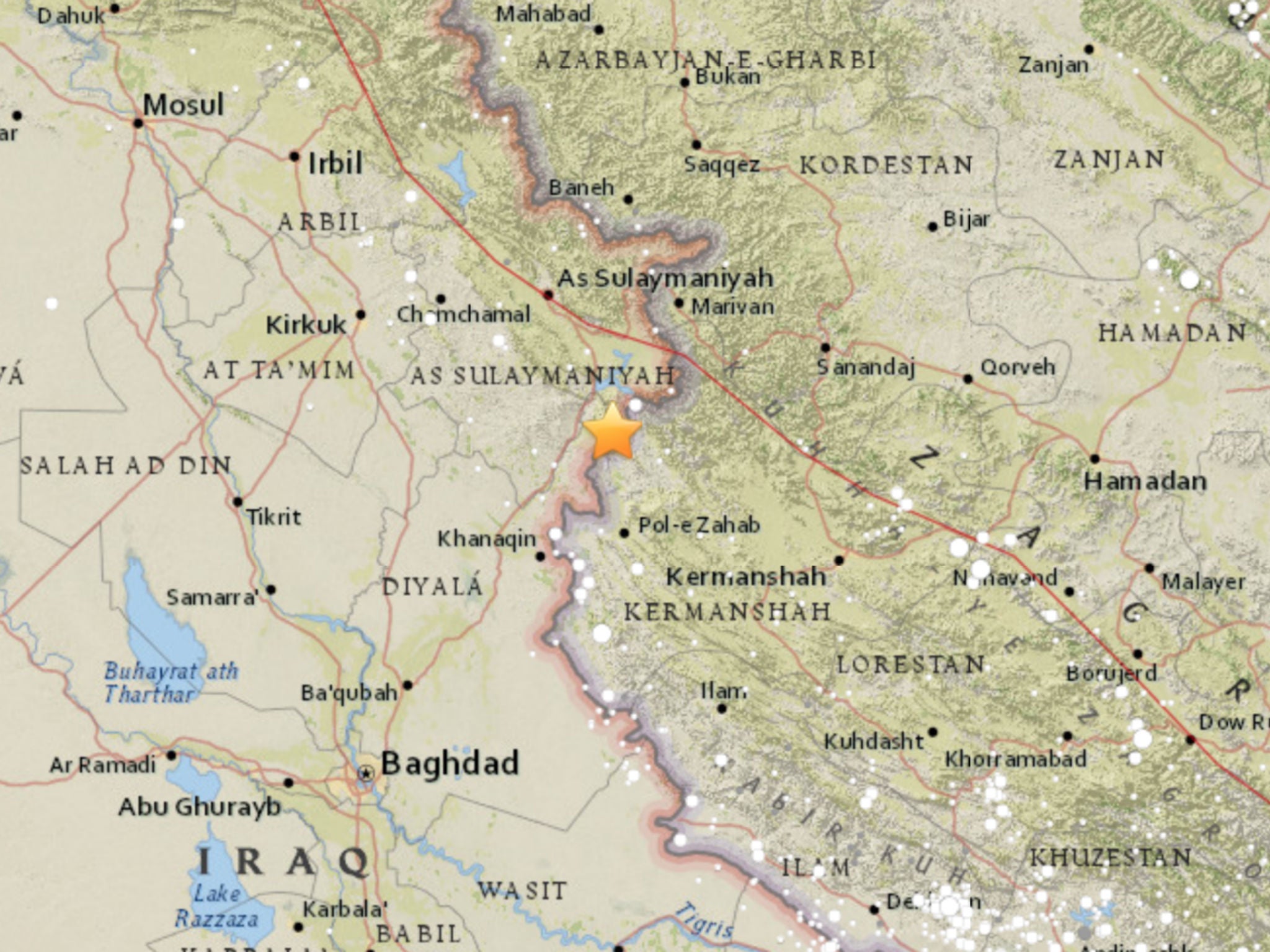Iran-Iraq earthquake: More than 445 people dead from devastating quake in border region
Death toll in magnitude 7.3 quake climbs as rescuers continue search for survivors in badly-hit Iranian town of Sarpol-e-Zahab

More than 400 people have been killed – and thousands injured – in an earthquake that struck Iran’s western province of Kermansh.
As thousands of homeless Iranians huddled against the cold as day turned to night, rescue teams sought desperately to try and find signs of life amid the rubble of collapsed buildings in towns and villages close to the Iraq border.
Iran’s English-language Press TV said at least 450 people were killed and 7,000 were injured, while the semi-official Tasnim agency put the total at 445 killed and 7,370 injured. Doubled counting is common in the aftermath of such tragedies and the death toll could fluctuate. Emergency services also warned the toll was likely to increase as they gained access to more remote mountainous areas.
More than half of the casualties are from the Kurdish-majority town of Sarpol-e Zahab in Kermansh province. The only hospital in the town of 30,000 was heavily damaged and the army set up field hospitals.
A total of 70,000 people are in need of emergency shelter, the Iranian Red Crescent warned in a statement.
Electricity has been cut off in many cities across the two countries and fear of aftershocks has driven many people outside despite the cold November temperatures.
Rescue workers continued despite the difficulties posed by landslides and the health ministry put out a call for emergency blood donations.

At least 14 provinces across the country had been affected, local media reported. A woman and her baby were reportedly pulled out alive from the rubble.
“We need a shelter,” a middle-aged man in Sarpol-e Zahab told state TV. “Where is the aid? Where is the help?” His family could not spend another night outside in cold weather, he said.
Relief workers said while much aid had been pledged, there was an immediate need for blankets, children’s clothes, medicine and large cans to store drinking water. TV aired footage of some people weeping next to corpses shrouded in blankets.
Iran’s Supreme Leader Ayatollah Ali Khamenei has offered his condolences and three days of mourning have been announced in Kermanshah. A national day of mourning was announced for Tuesday.
In Iraq, the earthquake killed at least seven people and injured 535 others, all in the country’s northern, semi-autonomous Kurdish region, according to its Interior Ministry.
Turkey, despite recent tensions over the Iraqi Kurdish Regional Government’s (KRG) controversial independence referendum, said on Monday it would send aid including tents, beds, heaters and food to help alleviate the situation, expressing “deep sadness” at the loss of life.
Many of the heavily damaged complexes in Sarpol-e-Zahab were part of construction projects begun under former hardline President Mahmoud Ahmadinejad. The disparity in the fatality figures between the two countries immediately drew questions from Iranians, especially because so much of the town was new.
Kokab Fard, a 49-year-old woman from the town, said that she could only flee empty-handed when her apartment complex began to shake. “Immediately after I managed to get out, the building collapsed... I have no access to my belongings,” she said.
Reza Mohammadi, 51, said he and his family ran into the alley following the first shock. “I tried to get back to pick some stuff, but it totally collapsed in the second wave,” Mr Mohammadi said.
The magnitude 7.3 quake was centred 31 kilometres (19 miles) outside the eastern Iraqi city of Halabja, the US Geological Survey said. It struck at a relatively shallow depth of 23.2 kilometres (14.4 miles), which usually leads to broader surface-level damage, and tremors recorded as far west as the Israeli coast of the Mediterranean and as far south as Baghdad.
“I was sitting with my kids having dinner and suddenly the building was just dancing in the air,” Majida Ameer, who ran out of her Baghdad home, said.
“I thought at first that it was a huge bomb. But then I heard everyone around me screaming: ‘Earthquake!’”
Iran, which sits on several geological fault lines, is prone to earthquakes. A magnitude 6.6 quake in 2003 killed 26,000 in the city of Bam.
Join our commenting forum
Join thought-provoking conversations, follow other Independent readers and see their replies
Comments